This species normally lives in a loose web, and like other web-forming spiders, it has feet that are specialized to match. So, unlike jumping spiders which have relatively huge feet with two claws and a bunch of tufted hairs that stick to surfaces (viewtopic.php?t=725, viewtopic.php?t=835), the web-forming spiders have small feet with no tufted hairs but three claws and some serrated bristles that are specialized for working with strands of silk.
Let's start with a high mag view, crossed-eye stereo:
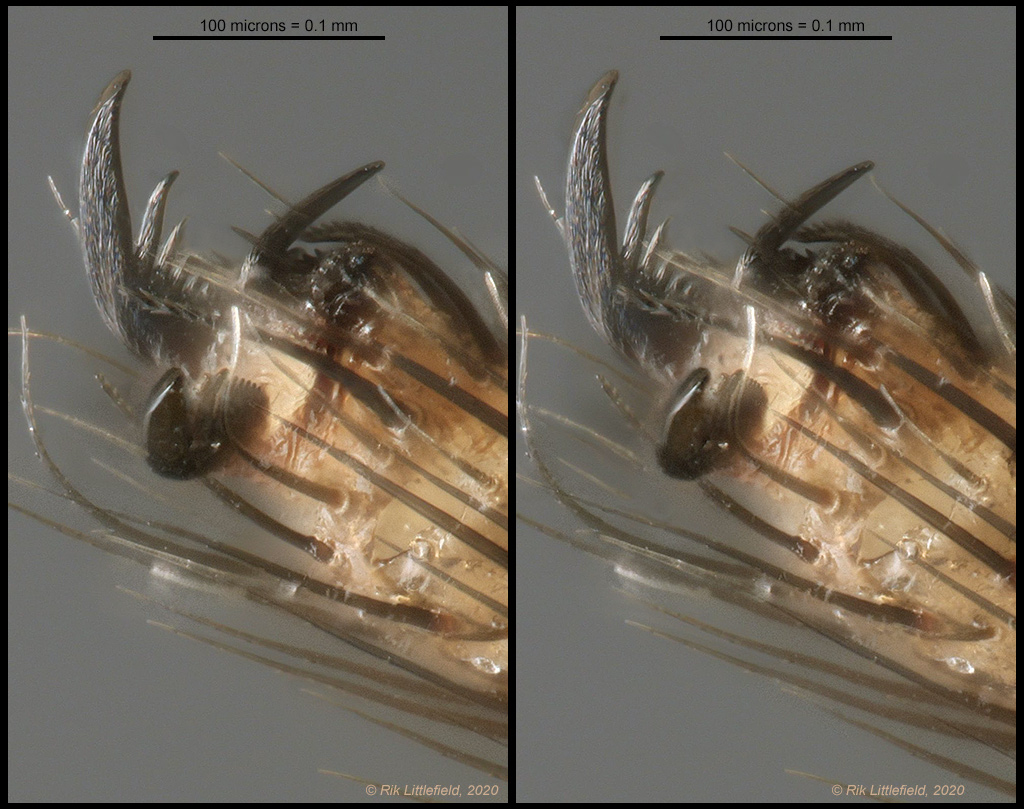
This same view, overlaid by an image of the corresponding silk, can be seen at https://www.photomacrography.net/forum/ ... hp?t=42887 (second image in that posting).
Now, here is the explanation provided in "Biology of Spiders", Rainer F. Foelix -- a wonderful book, highly recommended. This is from Second Edition, page 18:
Here are Figures 17 and 18 from the book:Tarsal Claws
The tip of the tarsus bears two bent claws, which are generally serrated like a comb (Figs 17, 18). Some spiders (Trionycha) have an additional middle claw. All claws arise from a single cuticular platelet. They can be lifted or lowered as a unit by the action of two antagonistic muscles, the musculus levator praetarsi and the musculus depressor praetarsi (Fig.24). The middle claw is quite important for web spiders, because they use it to catch hold of the silk threads of their webs -- in fact, only the middle hook and hot the large main claws grasps the thread. The thread is pushed by the middle claw against serrated bristles situated opposite the claws (Fig. 18b). There it is held, snagged in the little notches of these bristles. To release the thread, the middle claw is lifted by the musculus levator praetarsi; the inherent elasticity of the thread simply causes it to spring back out of the clasp of the claw (Wilson, 1962b).
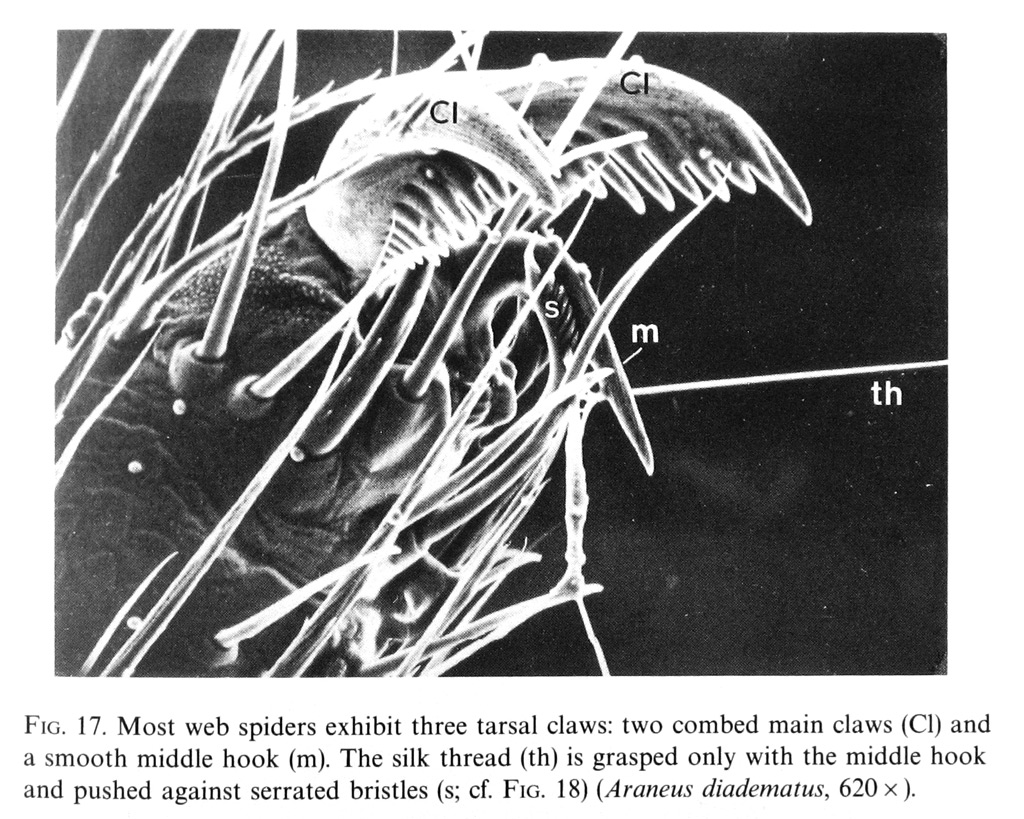
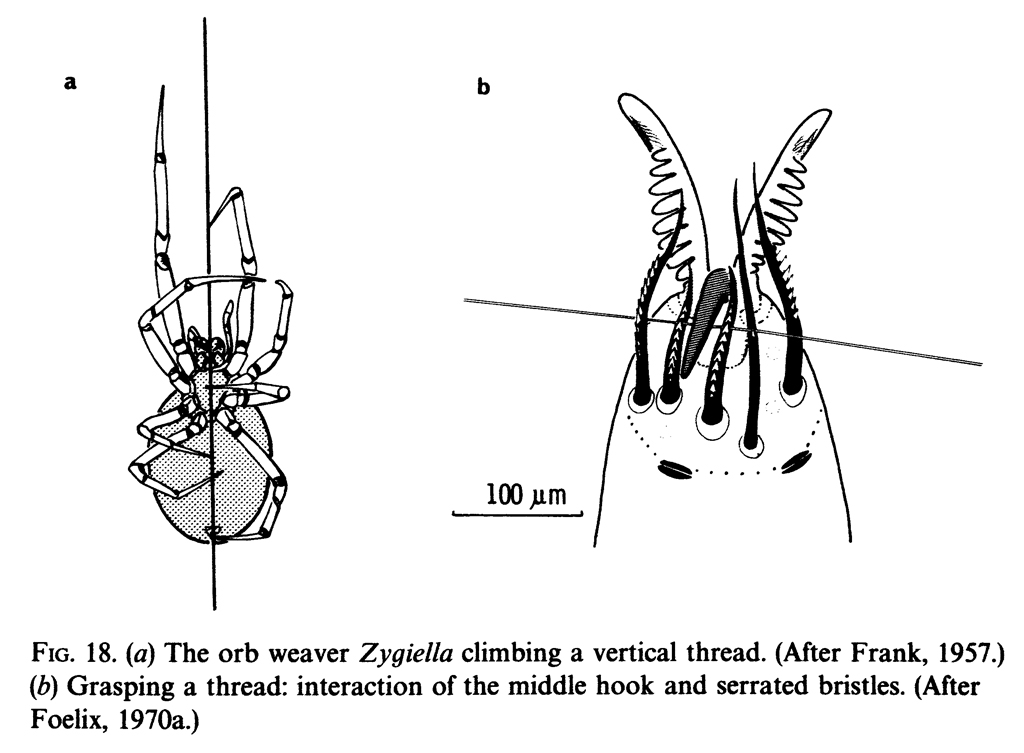
The stereo view includes a scale bar, but often those bars don't give me a very good intuitive understanding of how small a thing I'm looking at. So as an alternative, here is a zoom-in sequence, shot with an ordinary macro lens:
Showing the entire spider and a U.S. Lincoln-head penny.
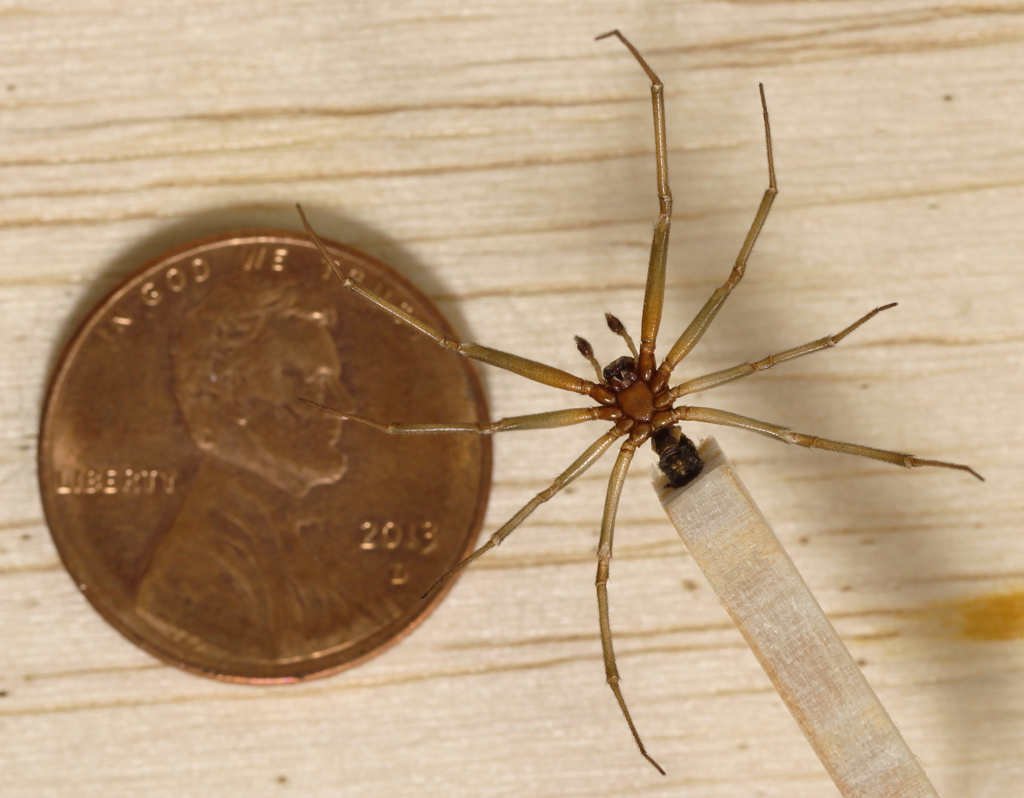
A closer view, at 1:1 onto a Canon T1i APS-C sensor so 22.3 mm field width.
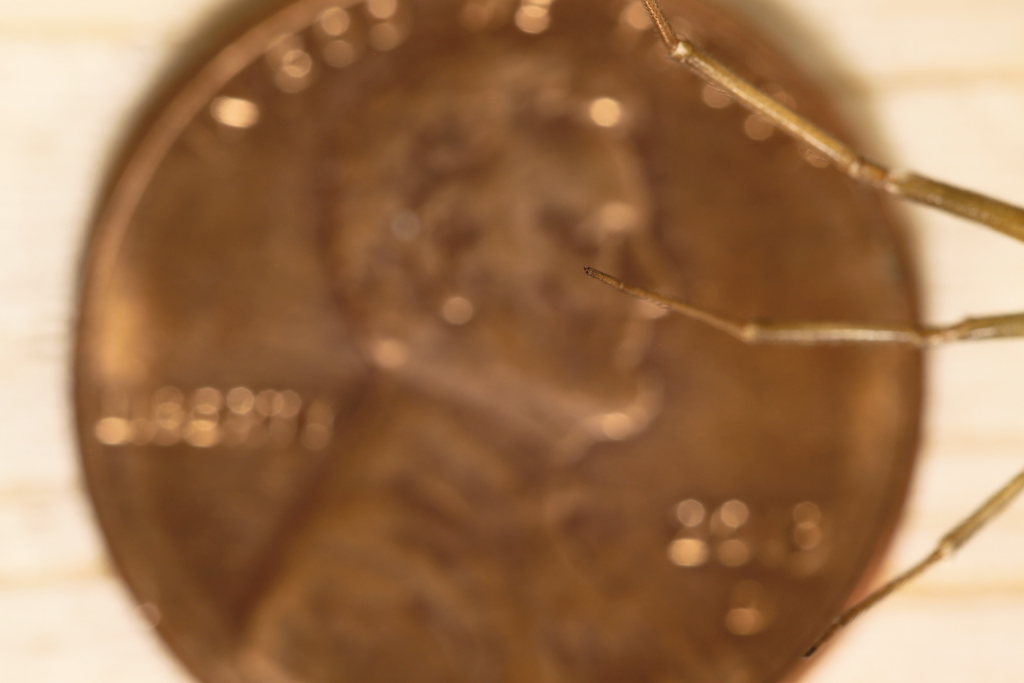
The same image, cropped to actual pixels.
Cropped farther and blown up to 400 pct.

Again, the stereo pair that we started with.

Shot with Mitutoyo M Plan Apo 20X NA 0.42 microscope objective on Raynox DCR-150 tube lens, so 20.8X magnification. Jansjö LED illumination through tracing paper diffuser, ISO 100,1 second exposure with EFSC on Canon T1i. 140 frames at 0.003 mm focus step, stereo at +-3 degrees off axis (+-2.053%), combining DMap and PMax in Zerene Stacker, with some cleanup in Photoshop.
If you run the numbers carefully, you'll see that the stereo views are cropped to only about 20% of the image width as originally shot. So why did I not use a higher power objective, say 50X, and get higher resolution? The answer to that question is that I did not want to alter the specimen, and to get the angle that I wanted, 20X Mitutoyo with 20 mm working distance was the highest power that I could reach with. It might be interesting to try again sometime with my Nikon 40X NA 0.80 M Plan apochromat. But that would require either remounting or taking apart the specimen, and the whole affair would be a lot of trouble for modest gain. Most likely I'll find some better way to spend my time.
--Rik
Edit: added links to companion thread about the ID and the silk overlay image.
